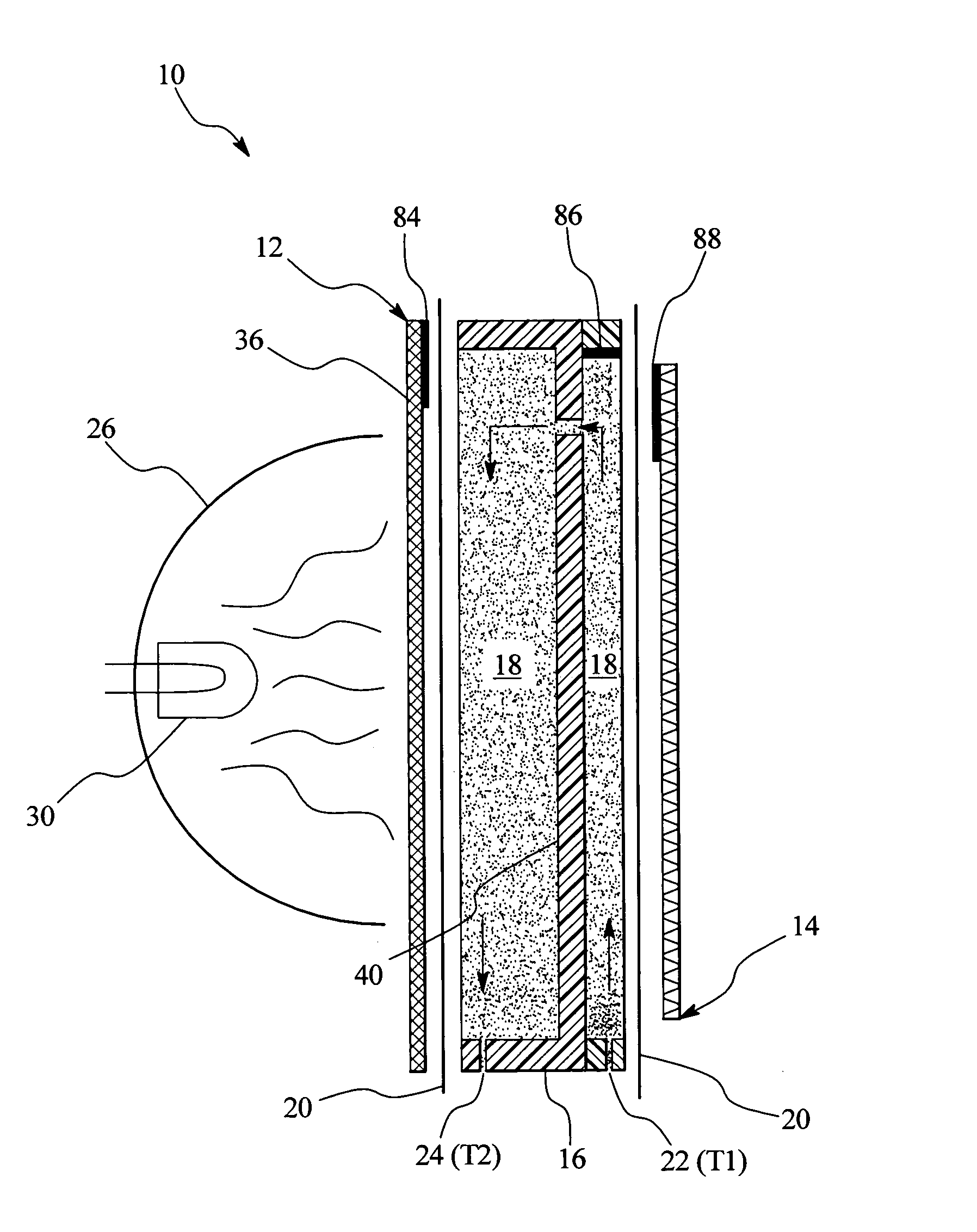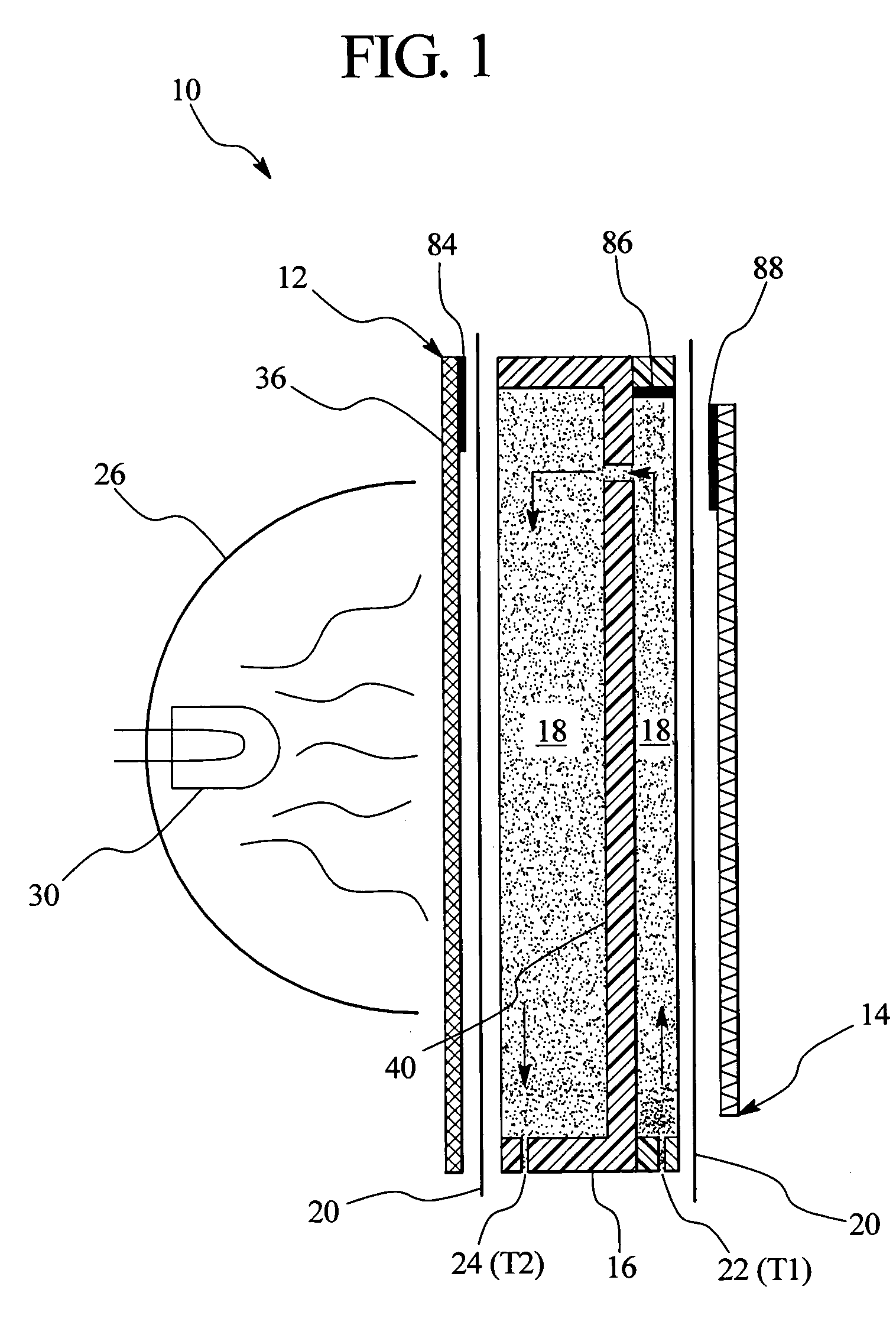Medical fluid heater using radiant energy
a technology of radiant energy and fluid heater, which is applied in the field of fluid heaters, can solve the problems of inability to balance water, minerals and excretion of daily metabolic load, inability to discharge urine, etc., and achieve the effect of improving the system for dialysis and improving the fluid heater
- Summary
- Abstract
- Description
- Claims
- Application Information
AI Technical Summary
Benefits of technology
Problems solved by technology
Method used
Image
Examples
Embodiment Construction
[0083]The present invention provides a dual in-line heater for use with medical fluids, in particular with dialysis fluids and most particularly with peritoneal dialysis including continuous flow peritoneal dialysis. In an embodiment, the present invention provides an infrared heater and a plate heater. The combination of the infrared heater and a plate heater provides efficient and effective heating of fluids over a wide-range of heating demands.
[0084]Either one or both of the infrared and the plate heaters can be used to supply the amount of heat required to increase the fluid temperature to a desired temperature. The infrared heater is a higher capacity heater, which can be selectively energized for high heat demands. The lower capacity plate heater is alternatively used alone when heat demands are relatively low, or used concurrently with the radiant heater to meet higher fluid heating demands.
[0085]The present invention provides for significantly increased control of heating fl...
PUM
 Login to View More
Login to View More Abstract
Description
Claims
Application Information
 Login to View More
Login to View More - R&D
- Intellectual Property
- Life Sciences
- Materials
- Tech Scout
- Unparalleled Data Quality
- Higher Quality Content
- 60% Fewer Hallucinations
Browse by: Latest US Patents, China's latest patents, Technical Efficacy Thesaurus, Application Domain, Technology Topic, Popular Technical Reports.
© 2025 PatSnap. All rights reserved.Legal|Privacy policy|Modern Slavery Act Transparency Statement|Sitemap|About US| Contact US: help@patsnap.com



